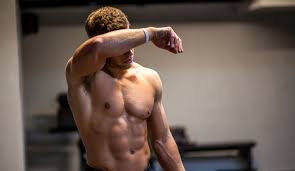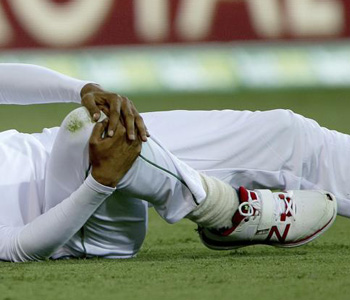Cricket Training & Workload : By Saurabh Jagtap (S&C Coach)
I believe fitness is very essential for almost every level of cricketer & studies have proved that cricketer are also prone to various types of injuries like any other field of sport.
The sport of cricket is challenged by three formats of the game. Each format
varying workload demands. Cricket is one such sport which test game skill, mental strength, stamina and physical endurance as well. Fast bowlers have greater overall match play demands than any other role in game. The overall aim of this blog was to identify that cricketer needs.
When we talk about exercise it is always the best option to start with getting
basic right what many cricketer neglect, is the fact that this speed up too much in their training program by lifting heavy but at the same cost of compromising the exercise technique. There is a physical demand on a cricketer’s body that requires the right strengthening and conditioning as a batsman, you are using your whole body to perform a fluid movement.
For batting, you rely upon the muscles in your back, shoulders and biceps. You’re also engaging your core muscles to help turn the body as you swing the bat. Fast bowling is another full body movement. Fast bowling workload has good relationship with injury and performance workload.
WORKLOAD

Workload monitoring can play an important role in preventing over training syndrome and management of unwanted amounts of fatigue. Both generic and sport-specific measures of workloads are used in sport. Workloads can be regarded as external and internal. External load comprises the ‘work’ performed in a physical task, while internal load describes the physiological or psychological response (i.e. ‘strain’) of the athlete to the external work performed. (weekly load x monotony = strain}
Workload monitoring in athlete established for injury reduction and game
performances. The fitness and fatigue from training and competition directly affect to athlete performance understanding acute and chronic fatigue is vital in athlete management performance outcome from training are directly related to the magnitude of the both fitness and fatigue responses to a given workload.
Fast bowler at greater risk of injury than their methods and nature of injuries sustained to involve intensive rehabilitation period. Fast bowlers injury profile is most similar to a football player and baseball pitcher.
TYPES OF INJURIES:

1. Direct injury { impact with Cricket Ball, Bat and Ground}
2. Indirect injury {due to repetitive stress}
GENERAL RULES FOR THREE TRAINING PHASES:
The most commonly indirect injured body parts are lower back, feet, ankle and ligaments {stronger bones, muscles, ligaments and tendon reduce risk of injury}
The basic things to remember before starting training is there is three periods {preparation, competition, transition) and three phases (general and specific, pre and competitive, Trans 1 and Trans 2). General rules for three training phases
1. Divided in 3 modes {High intensity, Mod intensity, High volume}

The human body responds to training in particular ways, Most of the methods depend upon measuring the quantity of training (volume) and quality/difficulty of training (intensity).
High intensity- The training focuses on performing quality weight training
repetitions to the point of momentary muscular failure, Training has a positive immediate effect (within 3 weeks) upon improving performance.
Mod intensity- Moderate intensity is anything that gets your heart rate up to 50-60 percent higher than its rate when you are rest.
High volume- High volume means more reps and sets, training has a delayed or longer-term training effect
2. Vary sessions (type, mode, volume, intensity) no same in week
3. In season perform lighter recovery session first in the week, before hard
training.
4. Skill tactical training is performed with endurance to challenge skill and
decision making ability in fatigue state
5. Fitness – fatigue= performance
6. Fitness is the positive result of the training, Fatigue is the negative result of training.
Specificity
A complete system of athletic development that focuses on training the athlete body in a manner that it is specific to their respective sport. These gain are archived by making sure all functional movement patterns are where they need to be.
“There is reason why a sprinter can’t run a marathon and marathon
runner can’t run a sprint. They certainly don’t train a same. Every
kind of sport is different, and you need to think about specific needs”
Recovery
Recovery aims to restore physiological and psychological processes.
Recovery is increasingly important to the high performance athlete in
a bid to reduce fatigue and enhance performance. Adequate recovery
is required for improve athlete performance and minimize the like
wood of over training syndrome. Over training syndrome is the characterized not only by a reduction in athlete performance But also
compromised neuromuscular, hormonal and biomechanical status.
Some of the most popular recovery methods for athlete.
1. Sleep
Getting quality sleep is more than getting quantity sleep, which means
sleep must have minimal disturbance. Athlete who sleep on average <8 hours per night have greater risk of being injured than those who sleep & 8 hours.
2. Nutrition & Supplement
Proper nutrition and supplements is important to improve recovery.
Getting in the right nutrients after exercise can help you to rebuild your
muscle.
3. Massage
Massage can be used for muscle recovery and rehabilitation of injuries.
Dynamic compression helps to improve circulation of blood, better
circulation means better oxygen supply to the muscle and reproving
metabolic waste product from muscle.
4. Active recovery
Commonly used form of post exercise recovery. The role of active recovery
reducing muscle soreness after exercise is important factor for athlete.
Various modalities of activity used {swimming, jogging, cycling}
5. Passive recovery
Passive recovery is the easiest & cheapest form of recovery. Sometimes
passive rest is the best way to help an athlete recovery, sometimes it is not.
Passive rest also include meditation, relaxing listening to music, flotation,
etc. Regeneration of mind can help recovery of body.



Comments are closed.